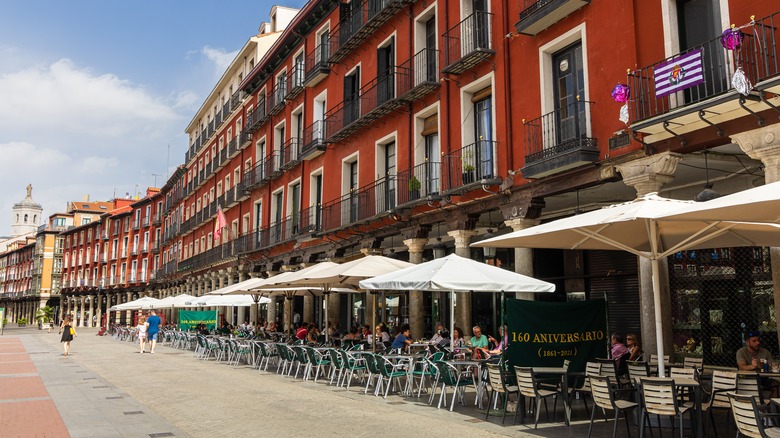The Importance Of A 'Siesta' In Spain And Why It Will Affect Your Summer Vacation There
An afternoon nap is viewed differently between cultures. While a Saturday afternoon snooze may seem to be a luxurious splurge to an American, in many parts of the world, it's a normal part of the workday. Spain is one of those places, and that need for an after-lunch siesta means many shops may not be open for business. It's not the only cultural difference you'll need to be aware of on your travels, but it's an important one.
That's because it's not uncommon for shop owners, construction workers, and farmers to block out the afternoon hours for some R&R, whether that means napping in the back of a truck or heading home for several hours before returning to work. Think of it as an extended lunch hour that large numbers of Spaniards take at the same time. And during the summer months, when the temperatures are high, you may find it to be a more common occurrence. While this might mean shopping in the evening instead of the afternoon, once you understand the how and why of this tradition, you'll likely find yourself embracing it.
How the Spanish siesta may affect your visit
When you're mapping out where to eat, or more importantly, where not to eat, in Barcelona or Madrid, one consideration will be whether the restaurant is even open. The same goes for shopping or visiting local attractions. Look up the hours online, and you'll likely see them listed as 9 a.m. to 2 p.m. and 5 p.m. to close or something similar. That's because this time gap is traditionally the part of the day where workers in many industries and students go home for lunch, rest, and a nap.
The actual hours vary somewhat, but you can expect to encounter closed shops at some point during your visit. While this might seem inconvenient, as a visitor to a different country, it's best to plan for it. To minimize any aggravation, plan to start your day early. Get out to enjoy the sites, foods, and activities during the morning hours. If you have any essential shopping to do, complete it during this time.
Also know that just because many Spanish businesses are closed for a few hours in the afternoon, doesn't mean you have less time to enjoy those locations — it just means you'll need to shift your timelines. You've already put a ton of research into the best month to visit Spain and other European countries, so just tweak your local daily schedules to accommodate this important Spanish tradition, and all will be well.
The historical relevance of the siesta in Spain
There are many theories on how the tradition of siestas began. Many accept that it was adopted from the Italians, considering the word "siesta" stems from the Latin word "sexta," which was the time of day the Romans paused their days to rest and eat. However, Spain has its own history as an agricultural country. ("Siesta" also translates to "nap" in Spanish.) Before the era of tourism, most workers went to work in the fields very early. In the heat of the day, they would nap before returning to the fields in the cooler evening hours. To reinforce the practice, during hardship times, people often had to work two jobs, so the afternoon break was a time between the morning job and the evening job.
Regardless of how it got its start, the siesta did become a mainstream part of Spanish culture. And while it's often viewed as significantly less common than it used to be, especially in areas that heavily cater to tourism, it still serves a purpose. Like many European cultures, the Spanish are out late, often not eating dinner until 10 p.m. or later and regularly staying out past midnight. So, while the siesta might seem unconventional, it's actually how the people of Spain get their recommended zzzs — and you should too. Now that you understand the cultural significance of the siesta, further prepare for your next trip with a review of the most important Spanish phrases tourists should know before visiting Spain.


